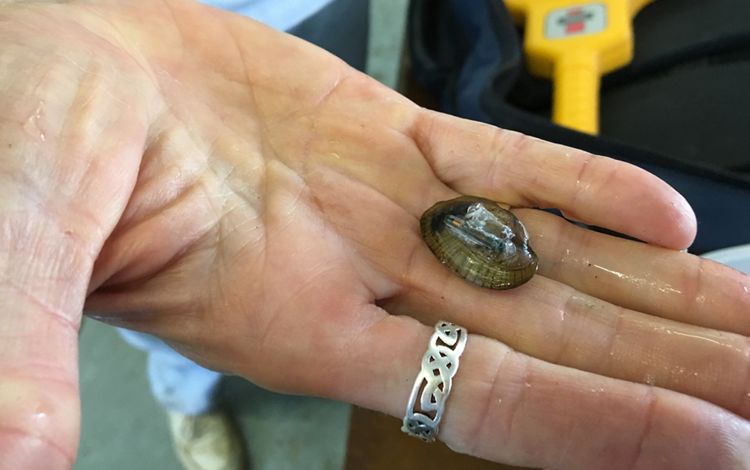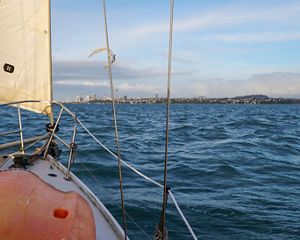Tagging Mussels for Fresh Water
We're restoring freshwater mussel populations for a healthier Wabash River.
Mussels are amazing animals. They are filter feeders, meaning they pump in water and remove particles from it as they eat. Their presence in a river is a good indicator of environmental quality, providing a snapshot of a river’s health.
Freshwater mussels disappeared from Indiana’s rivers and streams during a time when water quality was degrading and collection of these animals for their shells was still prevalent. After the Clean Water Act, water quality began to improve in Indiana; however, mussel populations did not.
Reversing the Decline of Freshwater Mussels
Mussels live a precarious life, with each species dependent upon a specific fish host to complete its lifecycle. This fact, combined with low numbers, means that many mussel populations are so reduced, they can no longer reproduce. So, no matter how much habitat we conserve, without intervention, little can be done to reverse the decline of freshwater mussels.
TNC scientists believe many habitats would now support freshwater mussels if there were a way to give them a jump start on recolonization. Enter TNC’s mussel conservation augmentation program.
In the augmentation process, larvae are extracted from pregnant female mussels to be grown in a laboratory or in cages submerged in a river. When the young mussels are large enough, they can be returned to the river to bolster geriatric populations.
TNC’s early efforts to augment a freshwater mussel population were carried out in the Blue River in southern Indiana using laboratory-raised wavy-rayed lampmussels.
Mussel Tagging 101
Baby freshwater mussels are tiny, so it is important to be able to track their growth and survival over time. Knowing whether and how reintroduced mussels grow and survive is a measure of success and river health.
Freshwater mussels can be tagged to track their growth and survival using a relatively simple procedure. A fast-acting super glue that bonds well in water is used to glue a small, flexible, colored plastic tag to the mussel's shell.
Mussel Tagging




Freshwater mussel tagging is useful for several reasons. It allows the tracking of a group of mussels over time. For example, say in 2019 green tags 1-1000 were used to tag baby mussels. Then in 2029, a mussel with a green tag #30 is found in a river. That means that this animal has lived for ten years. By recording the size of green tag #30 before it was placed in the river and measuring its size in the future, scientists get an idea of how much growth occurs in a particular river and even in a particular mussel bed. The number of green tags recovered over time can also be used to estimate survival rates.
In addition to the numbered tags, some mussels are also be outfitted with Passive Integrated Transponder or PIT tags glued onto their shells. This is the same tag system that is used for dogs and cats to identify them if they are lost. In a river, a PIT tag is read with a bar code-type reader to detect location. Since mussels can bury themselves in the riverbed, a PIT tag helps researchers find a subset of reintroduced mussels months or years after reintroduction.
Helping the Mussel Numbers Grow
Based on the success of that initial augmentation, TNC began a mussel augmentation program aimed at tributaries of the Wabash River; the same places where our soil health improvement efforts are underway.
TNC is partnering with the Center for Freshwater Mollusk Conservation in Frankfort, Kentucky and baby kidneyshell mussels are growing there now. At two events along the Wabash in 2019, TNC invited attendees to help tag the baby mussels in preparation for their release.
These tagging events gave people an opportunity to see, learn and support freshwater mussels in the effort to conserve and promote healthy rivers.
Rare species re-introduction and augmentation is a part of TNC’s strategic plan to bring animals back to the habitats we are conserving. Healthy rivers support healthy mussel populations--they just need a boost from people who can help put some mussel in it.
Make a Difference in Indiana
For 60 years, The Nature Conservancy has helped to protect 100,000+ acres in Indiana for the benefit of both people and nature.


